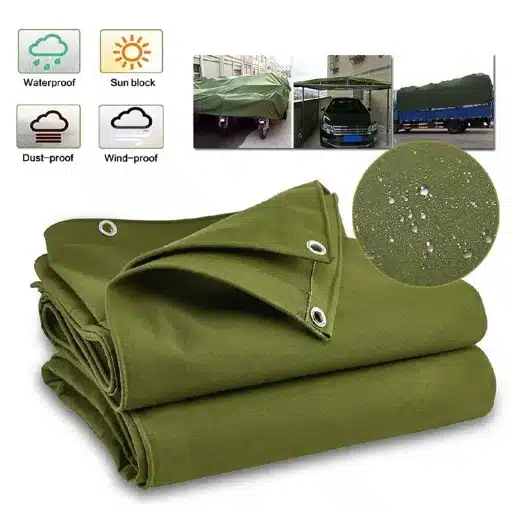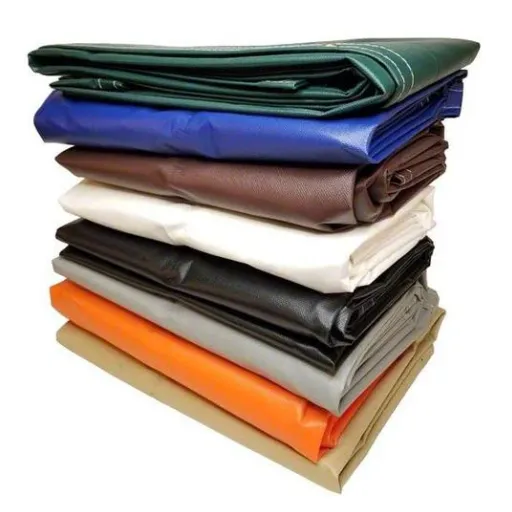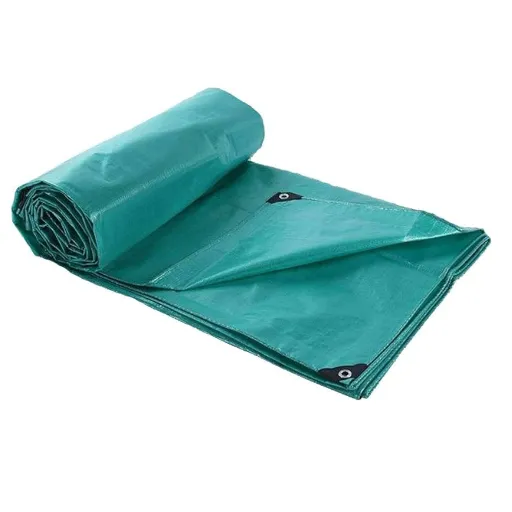There are not many tools that can compare to a heavy-duty tarp with regard to durability, versatility, and reliability. Heavy-duty tarps have been found to be indispensable in different situations; whether it is protecting costly equipment from bad weather, covering construction materials, or providing a temporary shelter they have been helpful across the whole spectrum of scenarios. They are available in different sizes, materials, and designs which makes them suitable for almost any task. This article will take you through the true worth and extraordinary flexibility of heavy-duty tarps, discussing their pros and uses, and why they are an indispensable asset for personal and professional purposes. You will also come to know these ordinary heroes in a more profound way and realize the different practical solutions they can offer for your specific needs, by the time the article is over.
What is a Heavy-Duty Tarp?
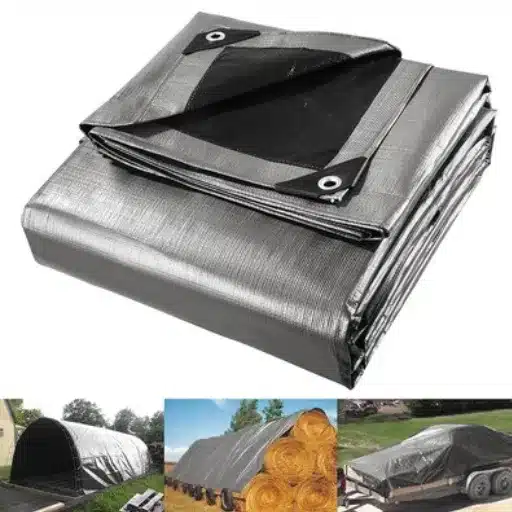
Definition and Characteristics
A heavy-duty tarp is a very strong tarp that can endure the most difficult conditions and rough handling of the materials. These tarps are often made of materials like polyethylene, vinyl, or canvas and they have many features such as resistance to tearing, water, UV rays, and extreme weather. Their edges are usually reinforced by means of grommets or hems that not only secure them but also prolong their durability. ), heavy-duty tarps are often the number one choice because their versatility allows them to be used in a variety of applications like construction, agriculture, camping, or covering equipment. Their main attributes are strong tensile strength, total water resistance, and abrasion resistance, which make them a trustworthy and workable solution in many lines of work.
Comparison with Light-Duty and Medium-Duty Tarps
The comparison of heavy-duty tarps with light-duty and medium-duty options shows the differences very clearly in the terms of durability, strength, and the areas of application for which they are meant. Light-duty tarps are made from thinner materials like polyethylene or lightweight canvas, and that consequently makes them suitable for short-term use or for less demanding tasks like covering small items or providing very temporary shelter. These tarps do not have, the tensile strength, and the weather resistance that comes from heavier grades.
Medium-duty tarps offer moderate durability and resistance. They are ideal for applications where more reliability is required than light-duty tarps can offer but less than what is needed from heavy-duty versions. Medium-duty tarps are often used for residential purposes, such as protecting outdoor furniture or making semi-permanent storage covers.
Recent search data indicates that a preference for heavy-duty tarps is evident in areas where performance and longevity are concerned. Heavy-duty tarps have advantages over lighter ones in terms of their ability to take the beating of the weather storms, making them puncture resistant, and also enduring repeated use effectively for a long while. On the other hand, light-duty and medium-duty options are cost-effective only in specific cases; otherwise, heavy-duty tarps would become the number one choice for users who need maximum protection and versatility in different industries and environments.
Material Composition: Poly and Beyond
Rugged tarpaulins are usually made from high-density polyethylene (HDPE) or other poly-based materials. Poly tarps are especially liked because of their lightweight and highly durable design which can stand the test of time with respect to tearing, UV radiation, and water damage. Apart from polyethylene, up to now many tarps introduce such materials as vinyl or canvas, which are to their suitability for applications needing additional strength or breathability. For example, vinyl tarps, are usually used in industrial environments thanks to their abrasion resistance and weatherproofing, while canvas tarps are used for areas requiring natural fibers with better breathing qualities. Purchasing choices etc. become more complex because of the multi-layer coatings, reinforcement, etc and it is up to the users to choose the composition that provides the best performance for their environment and application.
Applications of Heavy-Duty Tarps
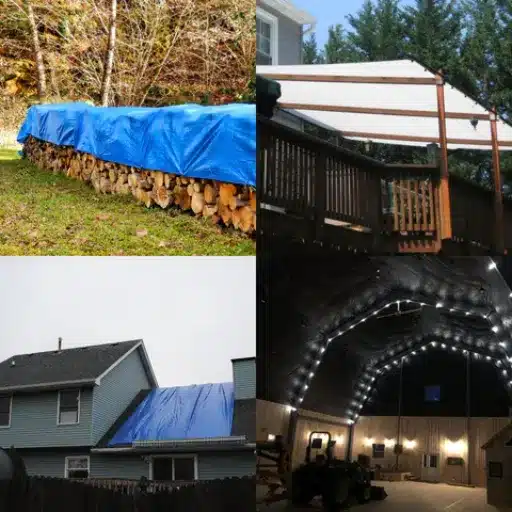
Agricultural Uses: Hay Tarps and More
Tarps, especially the heavy-duty ones, are very important in agriculture because they help to protect things like hay, straw, and farm equipment from the bad weather. Hay tarps are the kinds of tarps that are made to keep the bales dry by covering them against rain, snow, and UV rays. This helps to keep the bales fresh and to keep the quality of the feed. The modern tarp hardly ever has any breakdowns in quality, thanks to the UV-resistant coatings, heavy-duty edges, and tie-down systems that prevent water from coming in and are highly resistant to wind.
Searching through the data of ‘s search engine, it seems that farmers nowadays are more into tarps that are breathable and lasting the longest of all. They want tarps that promote airflow to prevent the growth of mold in the stored hay, which is one of the biggest problems faced by the farmers. Moreover, the use of tarps in shelters for machines, temporary crop covering during harvest, and the provision of low-cost protection for irrigation facilities are also some of the uses of tarps in agriculture. The use of these tarps not only helps with better management but also cuts down the loss from restriction caused by the environment, and thus their indispensable value in agriculture business is proved.
Outdoor Events and Canopies
When it comes to outdoor events, canopies are essential to provide shelter, shade, and a marked-off area for different gatherings. According to the recent information from ‘s search trends, there has been a remarkable rise in the interest registered for “weather-resistant canopies” and “portable event tents,” which implies that there is now a greater demand for solutions that are durable and easy to install. Event planners and people who hold functions outdoors want canopies that can resist extreme weather conditions, especially wind and rain, and that are also nice to look at. These structures are very often found in the wedding, festival, and outdoor market settings as they are the only ones who give comfort and protection to the guests and at the same time enhance the overall atmosphere of the event.
Emergency Situations and Disaster Relief
Canopies and portable shelters have been an essential aid during crises and disaster relief. The most recent search data from ‘s platform reveals a drastic rise in the number of people asking about “emergency shelter solutions” and “durable tents for crises”. The increasing number of searches indicates that there is a growing need for reliable and quick-to-deploy structures to be built for the protection of those that have been forced out of their homes due to natural catastrophes like hurricanes, floods, and earthquakes. Light but strong canopies are especially helpful because they can provide instant shelter, protect valuable things, and serve as the place for medical or military operations in the impacted zone. Being aware of this need, the manufacturers are working on projects that will enable them to produce tents that are highly portable, have quick setups, and are resilient so that they can cater to the emergency response teams’ critical needs.
Types of Materials Used in Heavy-Duty Tarps
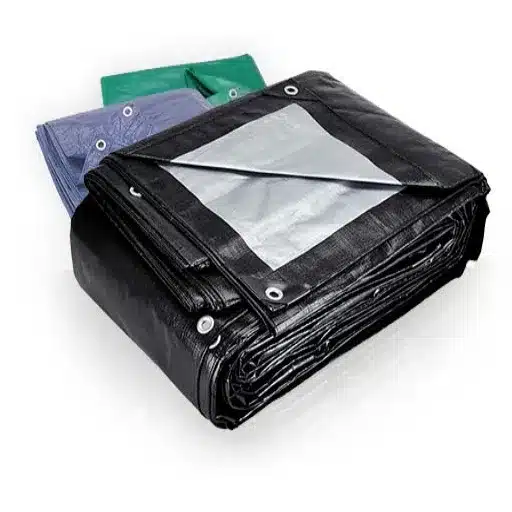
Polyethylene (Poly) Tarps
The polyethylene tarpaulins or poly tarps are the most versatile and the most popular materials among heavy-duty applications. The waterproof and UV-resistance nature of these tarps makes them the best option for short- or long-term use in different weather conditions. Polyethylene tarps are made by tightly weaving together strips of fabric and then the whole thing is coated with polyethylene which adds to the durability of the tarps and makes them resistant to tearing or even puncturing. Tarps are mainly used for covering mops, and equipment, providing shelter, and as ground covers, their price-performance ratio is excellent. Recent searches show a rising interest in polyethylene due to their adaptability in disaster relief and construction projects. With material technology improving, poly tarps will not only be lighter but will also be more environmentally friendly and thus consumers’ constantly changing needs will be met while sustainability concerns are addressed.
Canvas Tarps
Tarps made of canvas which is a strong piece of fabric from either cotton or polyester have been appreciated for their multiuses and eco-friendliness since a long time. Compared to polyethylene tarps, the canvass tarps are breathable and thus perfect for wind applications, like covering machinery, agricultural products, or creating temporary shelters. In the context of search trends, heavy-duty canvas tarps have suddenly become quite popular in sectors like trucking, farming, and construction, where durability and reusability are needed. Most of the time consumers inquire about weather resistance and lifetime of the product, and the good news is, modern waterproof treatments and UV-resistant coatings have made canvas tarps stronger and more reliable under extreme conditions. Thus, they are still a favored and sustainable choice for both personal and industrial utilisations.
UV Resistant Features
Tarp composed of canvas that is coated with UV resistant material can bear sunlight exposure for a long period without any major degrading . One of the queries about UV resistance that is commonly asked at search trends on ‘s database is, “What is the duration of use of UV-resistant tarps in direct sunlight?”The answer is mainly based on the tarp’s quality and the strength of the UV coating that is applied. The high-grade UV-treated canvas tarps can last between 6 months to many years depending on the conditions of sunlight and daily usage. Regular maintenance like removing dirt and proper storage can make these products last longer thus giving you an extra advantage of being a great investment for outdoor use. The UV protection features guarantee that the fabric does not lose its strength, does not become discolored or crack beforehand, giving one reliable performance even in harsh conditions.
Selecting the Right Heavy-Duty Tarp
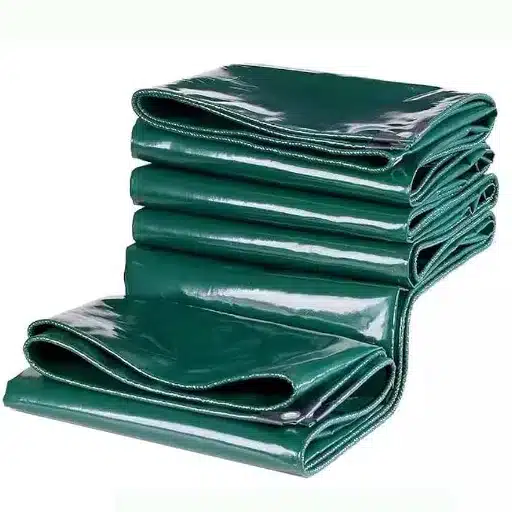
Key Criteria: Thickness and Mil Ratings
Thickness and mil ratings are the most significant factors that weigh heavily on decision-making when picking a heavy-duty tarp. Mils measure the thickness, and 1 mil refers to one-thousandth of an inch. It is generally accepted that tarps with a higher mil rating are thicker and stronger, hence providing better protection against cuts, weather, and water. For heavy-duty applications like construction, agriculture, or industrial use, tarps with a thickness of at least 12 to 16 mils are recommended for the best performance.
According to recent information from ‘s search engine, not only thicker tarps with higher mil ratings are, in fact, the ones most favored by users who need reliable protection against extreme conditions like long exposure to the sun, heavy rain, and snow. Always take into consideration your specific use case when picking a tarp, because the right thickness and mil rating will guarantee the longest life and maximum efficiency.
Custom Tarps: Tailoring to Specific Needs
When it comes to the custom tarp selection, it is essential to consider your particular needs together with the very recent data trends from ‘s search engine. For instance, those users who are looking for tarps usually focus on thickness, durability, and resistance to the extremes of nature as their primary concerns. A frequently asked question goes like this: “How do I decide upon the right custom tarp for my application?” Well, the answer first involves recognizing the purpose. For construction sites or industries, thicker tarps with higher mil ratings and stitched edges are perfect for the hard jobs. At the same time, the other tarps are lighter and suitable only for short-term coverage or less demanding applications. Also, personalized options let customers to pick their sizes, materials, and coatings that will be exactly fitting to the giving conditions, making sure that the tarp stays exceptionally performing under the required circumstances.
Durability Considerations
There are multiple factors determining tarp durability that come to play when assessing a tarp’s longevity and efficiency. Material choice is one of the main factors that play a critical role in the overall performance of a tarp in the face of rough handling and exposure to bad weather. One can say that polyethylene tarps are the most popular among the water-resistant types, while vinyl ones are the most used in extremely chemical conditions because of their strong resistance to abrasion. The above-mentioned materials can be easily categorized per their flawlessness on the basis of daintiness and not being able to confront UV rays successfully, as, presumably still, according to the user data uv-resistance and tear-strength are the factors most frequently looked for when evaluating tarp durability.
Maintenance and Care for Heavy-Duty Tarps
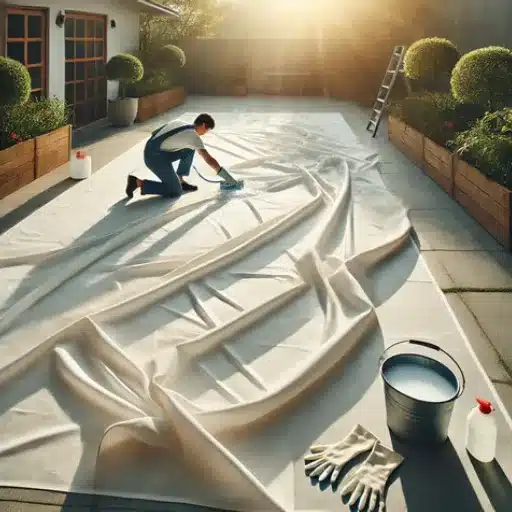
Best Practices for Cleaning and Storage
Cleaning Guidelines
The performance and longevity of heavy-duty tarps depend largely on the cleaning and storage practices employed. The most effective cleaning methods and storage tips for tarps are among the most common inquiries made by users based on the latest search data. Cleaning is all about the use of mild soap and warm water to figuratively scrub the tarp without ruining the material or coating by removing dirt, debris, or even stains gently. The use of harsh chemicals or abrasive scrubbing tools should be avoided since they degrade the tarp’s UV resistance and waterproof features.
Storage Recommendations
In storage, dry the tarp completely before folding or rolling it to avoid mold and mildew growth. Users are searching for storage options that will offer the most durability, with the most recommended choice being a cool, dry, and shaded place. Also, keeping the tarps away from direct sunlight and sharp objects will further help to avoid unnecessary wear and tear. Combining the best practices with the right environmental choices will certainly allow the users to extend the life of their heavy-duty tarps considerably.
Repairing Minor Damage
Small tears or punctures are examples of minor damage to heavy-duty tarps that can be repaired quickly and effectively without having to replace the whole tarp. One popular method includes the use of specialized tarp repair tape, for example. This tape is tough, waterproof, and has been made to stick very well to the tarp fabric. For best results, make sure that the area of damage is clean and completely dry before applying the tape.
For slightly larger tears, the use of repair tape along with a vinyl patch is recommended. Place the patch over the tear after placing repair tape on both sides of the damaged area for added strength. Users reading for long-term solutions usually rely on tarp repair kits, which generally include adhesive patches, glue, and sometimes stitching supplies for a durable fix.
Based on recent search trends, a lot of users want to know if it’s worth it to repair minor tarp damage instead of replacing it. The reply is in the affirmative, as repairing a tarp can be cost-saving and waste-reducing especially when the damage is small and the tarp is still mostly functional. If you timely attend these minor issues, you can also prevent further damage and extend the tarp’s utility.
Extending Lifespan: Tips and Tricks
There are several practical data-driven tactics that one can employ to make a big difference in extending the life of one’s tarp. The latest trends from ‘s search engine show that many users are curious about how durability of tarps is affected by regular maintenance and proper storage. The answer is found in a mix of care and prevention. Periodically clean your tarp and remove dirt, mold and debris, as these will eventually degrade the material. Before storing, make sure it is totally dry to avoid moisture buildup, which in turn leads to mildew and weakening of the fabric.
Moreover, keep your tarp in a cool and dry place, away from direct sunlight, because UV rays are one of the main causes of material breakdown. For areas that are likely to wear like corners or edges, consider reinforcing them with patches or putting covers over them. You can significantly enhance the tarp’s effectiveness and avoid replacements before time by putting into practice the aforementioned tips, which is in line with the emerging trend of cost-conscious as well as eco-friendly repair practices.
Frequently Asked Questions (FAQ)
What are heavy-duty tarps made of?
Typically, heavy-duty tarps are manufactured with premium materials like woven polyethylene that provide the best longevity and resistance to tearing. These tarps are offered in different thicknesses with such options as 10 mil, 12 mil, and even super heavy-duty versions that can be up to 20 mil thick. The material choice not only guarantees the tarps can cope with the tough weather and usages but also makes them perfect for industrial applications. Apart from that, some heavy-duty tarps are treated for waterproofing which also adds to their outdoor use. When you are tarps for sale, the material’s strength and purpose should be taken into consideration to get the most suitable tarp.
How do I choose the right thickness for my heavy-duty tarp?
The thickness of a heavy-duty tarp that you select will really depend on the demand of your situation. Tarps with a thickness of 20 mil and over are very good for the most demanding jobs like construction and industrial containment, whereas 10 mil or 12 mil options could be sufficient for softer tasks. It is vital to think about the place where the tarp is going to be spread; for example, a thick tarp will tear slower and survive the weather better, thus being good for outdoor projects. Also, if the tarp will be covering heavy stuff like wood or machines, getting a tarp that is more durable will ensure that it lasts longer. The best thickness for your heavy-duty tarp can be figured out by looking at the use and the environment.
What are the benefits of using custom tarps?
Custom tarps come with a number of benefits compared to the regular ones, enabling you to put together the tarp according to your own needs. You will have the liberty to choose the size, thickness, and color that will ensure that the tarp is just right for any application, whether it is for a flatbed truck or roof coverage. Furthermore, custom tarps can be produced with facilities like webbing and d-rings attached for easy securing, thus making them more functional. With the availability of heavy-duty waterproof materials plus tear-resistant fabric, then custom tarps offer high durability and reliability specific to your project. This versatility makes them a perfect option for both personal and commercial use, thus giving the tarp maximum effectiveness in different places.
Can heavy-duty tarps be used for landscaping projects?
Heavy-duty tarps said to be one of the most affectionate companions of landscape artists because of their strength and flexibility. After all, only one tarp can do many tasks in the garden like covering soil, plants and newly planted grass, keeping the area clean, and also helping to keep down the weeds. For instance, you can use it as a painter’s tarp when laying sod and getting rid of soil for turfing. Using high-denier materials, the tarps can endure drama in nature without getting tore up still. Moreover, landscaping tarps can be heavyweight or lightweight but ripping-resistant making them ideal for home projects.
What is the difference between light-duty and heavy-duty tarps?
Light-duty and heavy-duty tarps are different from each other in the first place by their material strength and thickness. Light-duty tarps usually consist of less durable and thinner materials which makes them suitable for light or temporary applications like furniture and plants covers. Heavy-duty tarps, however, are usually made of thicker and stronger materials that can withstand extreme conditions and heavy loads thus making them ideal for industrial and construction uses. Heavy-duty tarps are often available in multiple thicknesses such as 10 mil or 20 mil, which offers a higher level of protection against wear and tear. When choosing a tarp, the purpose and the needed durability should be the guiding factors in deciding which type to go for.
Tarp Thickness Comparison Guide
| Tarp Type | Thickness (Mil) | Best Applications | Durability Level |
|---|---|---|---|
| Light-Duty | 5-8 mil | Temporary covers, light-weight protection, short-term use | Low |
| Medium-Duty | 10-12 mil | Residential use, outdoor furniture protection, semi-permanent covers | Medium |
| Heavy-Duty | 12-16 mil | Construction, agriculture, industrial use, equipment protection | High |
| Super Heavy-Duty | 18-20+ mil | Extreme weather protection, long-term industrial applications, heavy machinery | Very High |
Material Comparison: Understanding Your Options
| Material Type | Key Features | Advantages | Best For |
|---|---|---|---|
| Polyethylene (Poly) | Waterproof, UV-resistant, lightweight | Affordable, versatile, tear-resistant | General purpose, construction, disaster relief |
| Vinyl | High abrasion resistance, weatherproof | Extremely durable, chemical resistant | Industrial environments, heavy-duty applications |
| Canvas | Breathable, natural fibers, eco-friendly | Mold prevention, sustainable, durable | Agriculture, machinery covers, trucking |
Reference Sources
| Source | Description | Link |
|---|---|---|
| Vinyl Tarps, Heavy Duty – VIVA | This source provides detailed specifications on heavy-duty vinyl tarps, including their thickness, abrasion resistance, and UV protection. | Link to source |
| 12×20 Heavy Duty Vinyl Coated Mesh Tarp | A resource discussing the features and applications of heavy-duty mesh tarps, ideal for outdoor use like landscaping and trailers. | Link to source |
| Heavy Duty Army Green Canvas Tarp | This site highlights the features of waterproof and dustproof heavy-duty canvas tarps, suitable for trucks, boats, and roofing. | Link to source |

